Get full access
To view the full article and get unlimited access to InsuranceAsia News's exclusive insight across 5,000+ articles
Already a Subscriber? Please Login
 As expected, the 21st Singapore International Insurance Conference (SIRC) has been superb- so many of the market’s makers and shakers are here, and I’ve managed not only to catch up with some old friends and contacts, but also to make new acquaintances. And what could be better than that? This conference, a Monte Carlo with air conditioning, is now a (re)insurance calendar essential.
As expected, the 21st Singapore International Insurance Conference (SIRC) has been superb- so many of the market’s makers and shakers are here, and I’ve managed not only to catch up with some old friends and contacts, but also to make new acquaintances. And what could be better than that? This conference, a Monte Carlo with air conditioning, is now a (re)insurance calendar essential.
A recurring theme in my meetings has understandably been the challenging global geopolitical and macroeconomic environment. Wherever one looks there are turbulent waters: war in the Middle East or Ukraine; the effects (as yet not clearly known) of the imposition of tariffs by the Trump administration; concerns about the private credit market; or spiralling levels of government debt in major economies. And Asia, at the hub of many industries and the most important trading region in the world, is at the heart of so much of this.
Yet it should also be stressed that for the APAC (re)insurance market, such a volatile environment presents a golden opportunity to demonstrate its expertise and relevance as the means to navigate a host of risks which are now hugely important. Whether it be marine cargo, political violence, trade credit, or property fac, right now is the time for the market to step up to the plate and prove its worth.
I do worry about quite how bumpy the next couple of years will turn out to be, however. I’ve just come from a meeting with the lovely David Kim, Head of Korea at Miller Insurance and a former Professor at Yonsei university. He said that a lot of his time there was spent teaching MBA students about the reasons for the Financial Crisis of 2008, as well as its consequences.
In 2015, Kim published a book with the title ‘Kicking the can down the road’. I haven’t read it (it is in Korean), but the title really resonated with me, as I’ve thought for some time now that the strategy of governments around the world to deal with the debt crisis by essentially extending debt even further has not exactly been the smartest way to tackle the problem. The issue with debt is that sooner or later, like death, it catches up with you. Will 2026 be the year of reckoning? Hmmm.
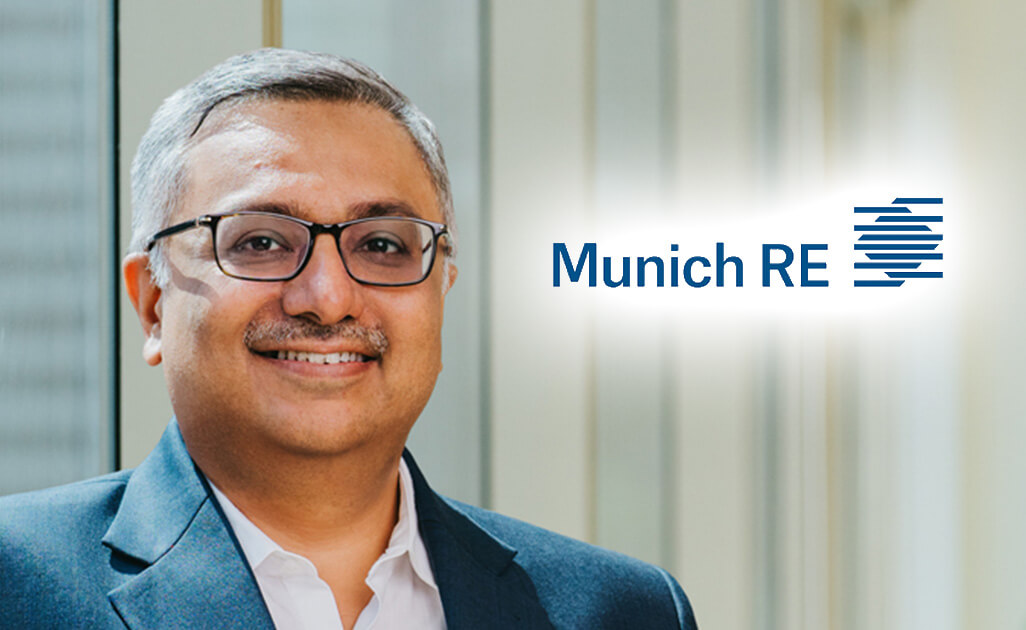
Terms, conditions and structures will largely remain stable, while “attachment points might go up, which is good”, according Hitesh Kotak, Munich Re’s chief executive for Japan, India, South Korea and Southeast Asia.
The improved performance of the primary markets in the region could see insurers retain more of the risk, he said.
“They have earned good profits, so they also tend to increase their retentions, which is what we would also love to see, as our main focus is on taking the volatility which comes from the peak risks,” Kotak added. “This is also backed by discussion with our broking partners and clients.
“Overall, pricing is very different for different markets and within a market, it’s also very different for different clients. The key is really who your clients are and what their underlying portfolio looks like, and the changes that we have seen in that portfolio over time.
“If you leave out Japan and Australia, in the rest of the region, the cycle is not very pronounced, because there has always been an adequate or even excess capacity supply.”
Kotak also does not anticipate a significant growth in demand from the region.
“Growth in demand is not as strong as we would anticipate given the existing, significant penetration gap in the market. For emerging markets, you would usually expect double-digit growth, but we’re not seeing that kind of growth,” he said.
“In some markets, the demand will grow because there has been an infrastructure fillip, so primary insurers will sell more to the end customers.”
Economies with strong infrastructure investment and markets that saw nat cat activity will be the exceptions.
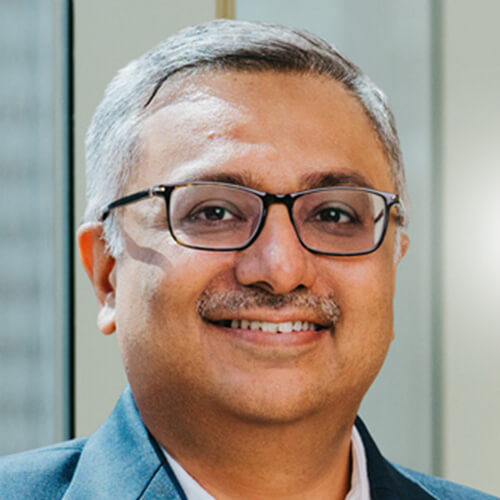
“Having larger players in the market is good for companies like us because it creates profitable growth opportunities in the mid-term,”
Hitesh Kotak, Munich Re
According to the global reinsurer, growth will continue to come from Indonesia, Vietnam, India, and to some extent also from Thailand, because Thailand had seen a large nat cat activity earlier in the year.
“We anticipate insurance companies to buy more earthquake capacity after this year’s earthquake event, because there is definitely a growing demand from the end customers for these covers,” Kotak said.
“Similarly, in Vietnam, where some severe flooding events happened, I also expect corrections with rates and demand moving up in this market. ”
Meanwhile, discussing the impact of consolidation on some of the Asian markets, Kotak said it is good from a reinsurance point of view. Consolidation in the industry helps insurance companies become more sophisticated and more disciplined.
“Having larger players in the market is good for companies like us because it creates profitable growth opportunities in the mid-term,” Kotak said.
“In Indonesia, potential consolidation driven by regulator’s initiative of increasing capital requirements will be positive for the overall market. Along with this, the tailwinds generated by announcement of numerous infrastructure projects is another positive.”
Motivations of the clients are at the heart of Munich Re’s approach to addressing demands for protection in the lower layers of programs.
“Our view on structured solutions covers depends on the motivation of the client. If the client’s motivation is to achieve a certain objective, like helping the P&L or supporting the balance sheet, then we are open and a leading player in that discussion,” he said.
“But if the motivation is not very clear, if it is to benefit the cycle and pass on the losses to the reinsurer, then obviously, we are not interested.”
On the challenges of the market, Kotak said the biggest concern he has is that the cost of acquiring the business is getting too high.
“Many insurers are competing for the same agents and, in the end, for the same customers. As a consequence, the cost of acquiring business goes up,” he added.
“I think we have to focus more on creating additional demand via new agents. This is tough, very tough but a market necessity.
“Our penetration gap in the emerging markets still has room for improvement and supporting markets through creating more distribution is the best way forward. Existing products are good enough. We just have to sell more and reach more people. I think we need more feet on the street.”
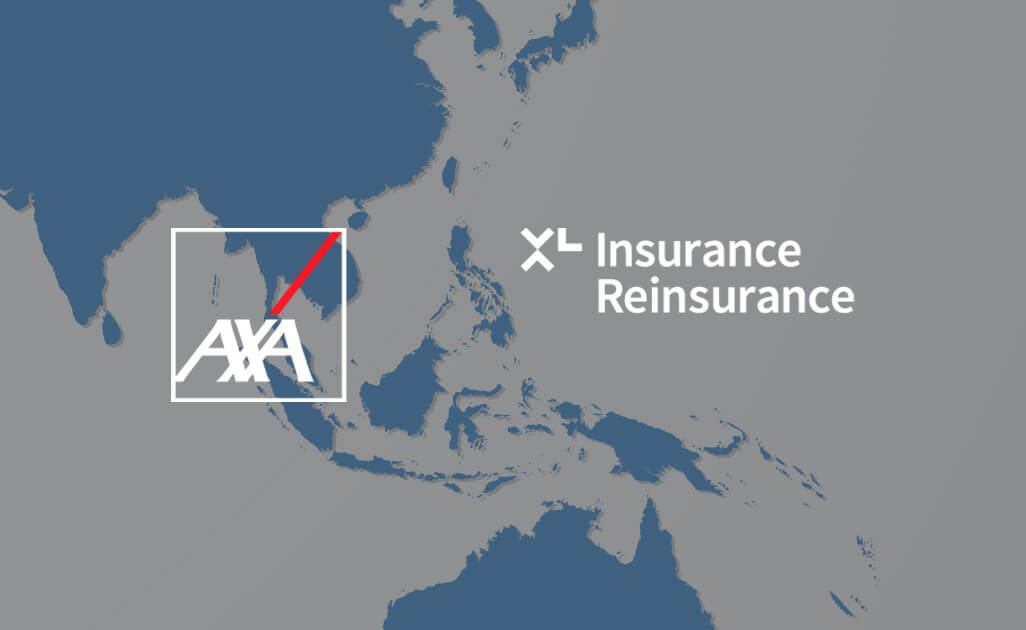 Insurers have a “critical role” to play in helping Asia’s economies to meet their Paris climate agreement commitments and decarbonise by backstopping the development of renewable energy, according to Axa XL’s head of energy transition.
Insurers have a “critical role” to play in helping Asia’s economies to meet their Paris climate agreement commitments and decarbonise by backstopping the development of renewable energy, according to Axa XL’s head of energy transition.
In an interview with InsuranceAsia News, Vicky Roberts-Mills, global head of energy transition at Axa XL, said an efficient supply of capacity from insurers is vital to ensuring the successful development of the renewable energy in Asia, including new technologies such as hydrogen and floating solar.
“We are seeing significant levels of investment happening across the industry and all elements of the energy transition,” said Roberts-Mills.
“Some of that may be accelerated over the next couple of years with political headwinds we are seeing in other areas of the world.”
“When we think about the role insurance has to play, for many of these assets and infrastructure, insurance is a fundamental element to finance, build and operate that.”
Delivering renewable energy capacity is a vital component of Asian countries’ Paris climate agreement commitments to achieve net zero carbon emissions.
This process requires huge amounts of investment in the coming decades, both in existing onshore and offshore wind and solar assets, for which there is ample insurance capacity in the region, and newer technologies, such as green hydrogen, where existing capacity is scarcer, according to Axa XL.
“There is a strong flow of capacity for more mature technologies within the energy transition,” said Roberts-Mills.
“Onshore wind, and offshore wind to a certain extent. There is competition in that market, and we need to ensure underwriting discipline with a full understanding of those exposures.”
“From concept to construction, the role of insurance must come in earlier than the point we have spades in the ground or turbines going into the water.” Vicky Roberts-Mills, Axa XL

Axa Group, Axa XL’s parent, has a target to write EUR6 billion (US$6.9 billion) of P&C GWP relating to the energy transition between 2024-26. Last year, Axa wrote EUR2.1billion of GWP relating to the transition, according to the French insurer.
Heading into 1.1 renewals, Axa XL sees a “huge growth opportunity” for renewables in APAC, despite the ongoing market softening, due to the scale of the investment required, according to Roberts-Mills.
“We are seeing reductions for good quality risks which may not be quite as subject to particular exposures such as nat cat,” said Roberts-Mills.
“On an overall perspective, we are seeing pressure on rates and a transition in the market cycle, but it is dependent on the quality of risks and exposure to nat cat, and how those exposures are being managed through the limits that are bought or the structuring of those programmes.”
Insuring wind and solar assets in Asia, a region highly prone to natural catastrophes including earthquakes, typhoons and tsunamis, comes with acute challenges. But it is also essential to ensuring the development of the renewable energy industry across the region.
“Nat cat capacity is finite, and it is an area where as an industry we are looking to see how we can do more in that space,” said Roberts-Mills.
“We will continue to see the imposition of sub limits after significant losses, and capacity constraints, but that in itself enables the market to continue to offer the appropriate support for these risks.”
Roberts-Mills added that insurance has a “critical role” to play in the energy transition.
“From concept to construction, the role of insurance must come in earlier than the point we have spades in the ground or turbines going into the water,” said Roberts-Mills.
“There is a need for insurance to be involved in projects early in the life cycle.”
 1. In what ways has digitalisation improved operational efficiency within reinsurance brokerage operations, and what specific technologies have had the most significant impact?
1. In what ways has digitalisation improved operational efficiency within reinsurance brokerage operations, and what specific technologies have had the most significant impact?Jacob Hughes: From a servicing perspective, the initial focus of automation is not always on the flashiest applications but on addressing repetitive, manual tasks which deliver benefits to all stakeholders along the reinsurance value chain.
Specifically, we have been focusing on automating the ingestion of data to reduce turnaround times, enhance controls and minimise manual keying errors. This practical approach has already delivered significant success, with some processes benefiting from over 95% shorter cycle times through the deployment of bots. By automating these routine tasks, we free up resources to reinvest in stronger controls and more value-added service to our clients and markets, ultimately improving both efficiency and service quality.
In Asia Pacific, we are also looking to accelerate our implementation of B2B messaging with markets already working with Guy Carpenter in other regions, and regional APAC markets. B2B messaging delivers significant benefits to both our clients and markets, and we have significant ambitions to increase the proportion of our markets enabled with B2B with Guy Carpenter over the coming years.
JH: Globally, we have launched a variety of initiatives to enable rapid and accurate data transfer, and to collaborate with our clients on the ingestion and straight-through processing of claims. These initiatives have resulted in dramatically improved turnaround times.

Kitty Bao: Our risk assessment models are significantly enhanced through the integration of advanced analytics capabilities. This process begins with comprehensive data preparation, encompassing the collection, cleaning, structuring and transformation of vast datasets to ensure high-quality and data-driven insights.
We then leverage machine learning techniques to refine price and loss prediction, enabling us to extract deeper data insights. In addition, AI models are employed in cyclone prediction, allowing for more precise forecasting and risk mitigation. Together, these advanced analytics tools empower us to deliver more robust, data-driven risk assessments that support informed decision-making.

JH and KB: Organisations face several challenges when implementing AI-driven solutions and advanced analytics, including regulatory compliance, data quality, user adoption and quality control.
At Marsh McLennan, we have implemented an Artificial Intelligence Risk Framework to ensure we comply with AI regulations and that our usage of AI is legal and safe.
To overcome data quality issues, we deploy automated systems for data collection and aggregation to reduce human error.
For smooth AI adoption across generations, we invest in intuitive and user-friendly interfaces, comprehensive training programs and strategic talent acquisition.
Finally, we maintain quality control by enforcing a robust peer review framework to validate AI-generated results and prevent over-reliance on AI outputs.
 Southeast Asia’s regulatory shifts, while appear challenging, offers an unparalleled opportunity for forward-looking (re)insurers to drive innovation, foster consolidation and unlock new avenues of growth, said Jasmine Miow, head of South Asia and Southeast Asia markets, Peak Re
Southeast Asia’s regulatory shifts, while appear challenging, offers an unparalleled opportunity for forward-looking (re)insurers to drive innovation, foster consolidation and unlock new avenues of growth, said Jasmine Miow, head of South Asia and Southeast Asia markets, Peak Re
“Many of the region’s insurance markets are undergoing their most significant regulatory updates in decades.
“Supervisory authorities in Indonesia, Malaysia, Vietnam, the Philippines, and Thailand are tightening capital regimes, raising solvency minimum requirements, and encouraging more robust risk management practices,” Miow said.
In Indonesia, phased increases will require insurers to hold up to IDR1 trillion (about US$60 million) in capital by 2028 – setting one of the highest capital thresholds in Asean.
“This move is widely expected to lead to a wave of industry consolidation, as smaller and mid-sized insurers seek new investors, partners, or acquirers to meet the heightened requirements,” she said.
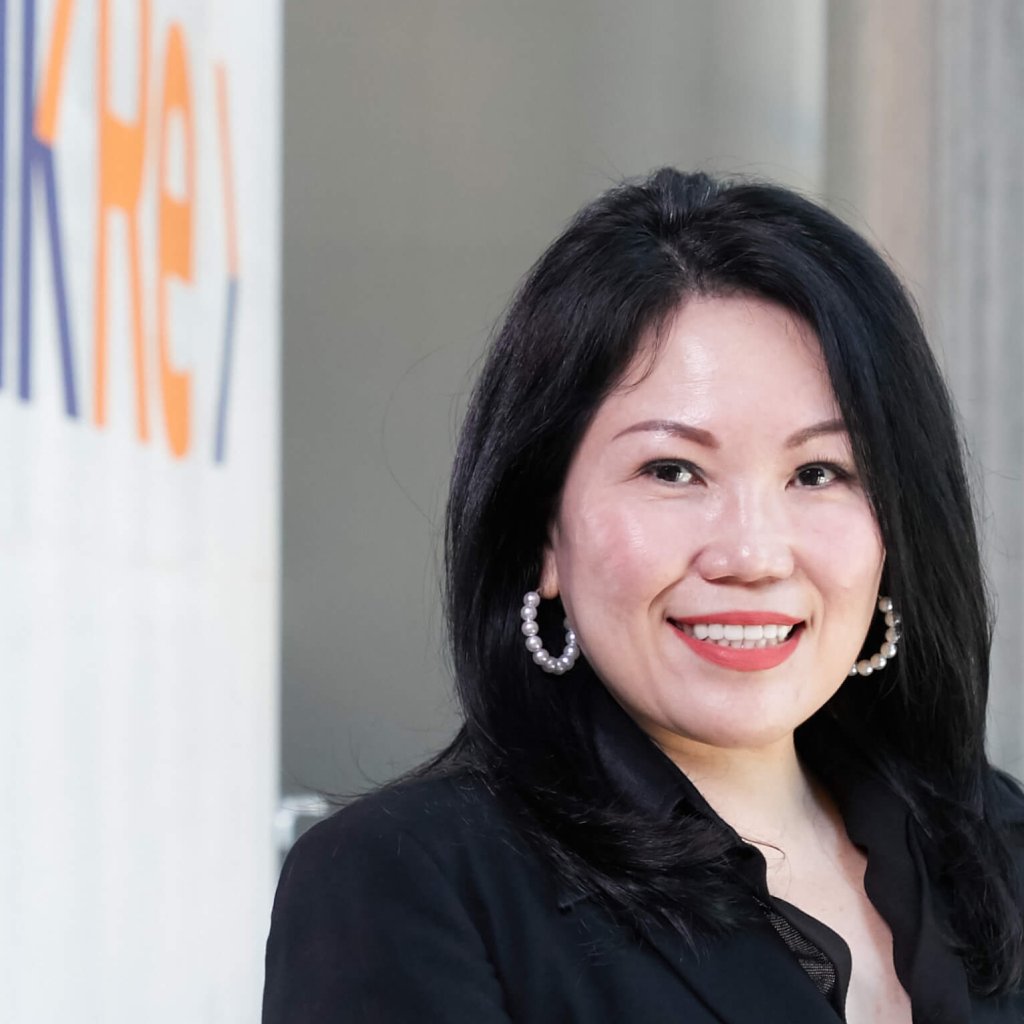
Jasmine Miow, Peak Re
Malaysia is preparing to implement the Risk-Based Capital 2 (RBC2) framework, Philippines maintains its current minimum capital requirements with potential regulatory updates under evaluation for future implementation. Vietnam is implementing a phased transition to update its regulatory requirements, with some capital raising activity observed as insurers prepare for future growth.
In Thailand, the Office of Insurance Commission (OIC) is enhancing prudential oversight by integrating catastrophe risk into capital adequacy standards to strengthen industry resilience.
The Myanmar earthquake in March, with tremors felt in Bangkok, highlighted the region’s underestimated cat exposure. The OIC is using this as a case study to launch three phased actions this year, to improve awareness and readiness.
Taken together, these changes reflect Southeast Asia’s steady progress towards more robust, riskbased oversight.
“While these changes create immediate operational and financial challenges, they are fundamentally designed to enhance the stability and sustainability of Southeast Asia’s insurance sector,” Miow noted.
“Stronger capital positions mean greater protection for policyholders and a more resilient foundation for the industry’s continued development.”
In the emerging regulatory environment, simply meeting minimum capital requirements is not enough, according to Miow.
“The ability to effectively manage capital and optimise balance sheets has become a powerful differentiator. Insurers that can adapt quickly to new rules and deploy capital efficiently will be best positioned to capture emerging opportunities as the market evolves,” she added.
“Peak Re believes that regulatory change is not just about compliance, but also about using capital management strategically to foster growth. For example, as consolidation accelerates, we work closely with clients to design bespoke reinsurance solutions and structured transactions that ease capital constraints, support M&A, and facilitate portfolio optimisation.”
For smaller players, this might mean finding the right partner or investor; for larger insurers, it could involve innovative capital solutions, she explained.
One of the most immediate consequences of rising capital requirements is industry consolidation.
“This environment, while challenging, creates opportunities for stronger players to build scale, diversify risk, and enhance operational efficiency through well-executed mergers, acquisitions, or strategic partnerships,” Miow said.
“The current wave of regulatory change is not an obstacle, but a springboard for transformation. Insurers and reinsurers who approach compliance as the foundation for innovation and long-term growth will be best positioned to shape the region’s future,”
“At Peak Re, our strength lies in our diverse team of regional experts with a global perspective,” she added. “Working across markets with unique dynamics allows us to better understand clients’ evolving needs.”
The reinsurer’s approach, Miow said, centres on three pillars: bespoke reinsurance structures that optimise clients’ capital positions; local expertise that reflects market nuances, and agile support that ensures capital is deployed where it creates the most value.
 While issuance volumes in APAC are still relatively modest, the long-term fundamentals are strong, according to Andy Palmer, head of ILS structuring for EMEA and APAC at Swiss Re.
While issuance volumes in APAC are still relatively modest, the long-term fundamentals are strong, according to Andy Palmer, head of ILS structuring for EMEA and APAC at Swiss Re.
“The region’s growing exposure base, coupled with rising insurance penetration and a more supportive regulatory environment, will underpin further development of the ILS market,” Palmer said.
Key considerations for issuers in Asia Pacific include diversification of reinsurance capacity, he added.
“ILS provides an additional, complementary source of protection alongside traditional reinsurance,” Palmer said.
“This also supports a strategic consideration to build, on the one hand, the IP and know-how, and on the other hand, relationships with ILS investors for a sustainable risk transfer framework in the future, and before such additional capacity needs become acute e.g. due to growth or a large nat cat event.”
Innovation and risk management is another consideration, according to Palmer.
“Regional insurers and reinsurers are increasingly viewing ILS as a strategic tool to manage capital efficiently under evolving solvency frameworks,” he added.
Meanwhile, policy initiatives in Singapore and Hong Kong are lowering barriers to entry and simplifying issuance, encouraging local players to explore the market.
“Both jurisdictions have seen strong take-up in recent years and the frameworks have been developed and improved based on live experience,” Palmer said.
“The main limitation holding back cover for more regions and perils is generally the availability of widely accepted models.” Andy Palmer, Swiss Re

Swiss Re Capital Markets has been active in working directly with both Hong Kong and Singapore in respect of developing their respective ILS jurisdictions to support the growing ILS market in Asia and beyond.
“The ILS market provides important capacity for Asia and the wider APAC region, and we anticipate that it will provide further capacity in future as insurance penetration grows and as risk transfer needs continue to increase,” he added.
Market development going forward will depend as much on increasing risk transfer needs alongside innovation and risk management decisions within evolving solvency frameworks.
Among the challenges, Palmer highlighted the limited availability of high-quality loss data and robust modelling capabilities, as many regions and perils do not have vendor models, which also links to ensuring there is sufficient investor comfort with the risks.
“The main limitation holding back cover for more regions and perils is generally the availability of widely accepted models. These are typically developed for region and perils where there is a sizeable insurance market, so there is usually an alignment between model availability and risk transfer needs,” he said.
As the insurance market develops and risk transfer needs grow, the availability of data helps to provide risk takers with the necessary insights to adequately understand and cost the risk, and therefore underpins the availability of capital.
“Even today, there are many clients that could sponsor an indemnity cat bond if it made strategic sense to do so,” according to Palmer.
“In the meantime, we have seen parametric cat bonds successfully structured in the region, and the development of initiatives such as the PERILS Extended Industry Loss Database that provides industry loss estimates across the region can serve to support future product development.”
There are also other elements to consider part from regulatory complexity and cost of issuance relative to program size, Palmer added,
“As ILS products are fully collateralised, there is a minimum return requirement that means that pricing is often greater than that required by a well-diversified reinsurer with a strong balance sheet for risks in the region,” he said.
The investor base for ILS, however, remains predominantly concentrated in the US and Europe.
“As education of ILS as an asset class and its risk-return profile continues to develop, alongside aspects such as regulatory clarity around investment limits and capital treatment, we may see more ILS fund managers being created locally,” he added.

As the market is getting motivated with growth aspirations of both reinsurers and insurers, there is a notable rise in appetite for alternative or structured solutions, said Richard Jones, chairman for Southeast Asia, Taiwan and Korea, of Gallagher Re.
“I always like a motivated reinsurance market because it usually produces some innovative structures and people are willing to talk about alternative structures.
“That market has always been alive out here, but we’ve found more players coming in and saying, yes, we can consider structured solutions, longer-term arrangements, which is helping the clients out to achieve their goals because our clients want to grow their business as well,” he said.
“Since the last 1.1 renewal, we have seen reinsurers being more flexible and cedents getting a slightly easier, more straightforward renewal.”
With both insurers and reinsurers pursuing growth, Jones expressed a strong sense of optimism for clients during the 1.1 renewals.
“There’s a lot of chat around keeping discipline and I completely understand that. But I think there is more capital available and they want to use their capital.
“So that in itself should help us to create some more innovative products which are going to help maybe with the attritional end of the business,” said Jones.
“Of course, there’s still pressure in the system, but I would like to think that there’ll be some further flexibility and open-minded solutions which obviously will be at the forefront.”
“I think there's a good opportunity for clients to make the most of that and help them grow their business.” Richard Jones, Gallagher Re

As cedents navigate challenges, such as the changing model of agency business going over to digital as well as developing risks, including cyber and the energy transition, reinsurance can provide essential support, according to Jones.
“And in the longer term, if they want to go into new products, there is an appetite from the reinsurers, who are keen to make strategic partnerships to manage portfolios in a market that’s becoming a little bit more flexible.
“I think there’s a good opportunity for clients to make the most of that and help them grow their business.”
Besides, the growing MGA space, which is stepping into the specialty line, is also providing a consistent immune capacity, which is going to be of use in the future, he said.
“Yes and it’s giving cedents more options and I think that’s a positive thing.”
The primary insurance markets are having challenges in growing, according to Jones.
While India and China are seeing “definite growth” with many positive indications, insurers in certain regions of Asia, such as Korea, are facing challenges to expand their domestic business.
“But what’s quite exciting is that they’re now looking overseas. We saw recently the headline purchase of Fortegra by DB, Samsung and their Canopius investment, etc.
“I find that very energising for the region and it’s great to see more Asian-based entities going global and overseas, they start bringing product back. And from our viewpoint, we can bring real value with our global reach.
“In my view, Asia, at the moment, is a pretty dynamic and healthy market,” he said, adding that it’s important to find innovative solutions to match the motivated market, where re(insurers) both want to grow
“My key message is we need to match the motivated reinsurance market.
“This is so that we can get great results for our clients and align with their own goals. If we can match the two, it’ll be a very successful outcome.”
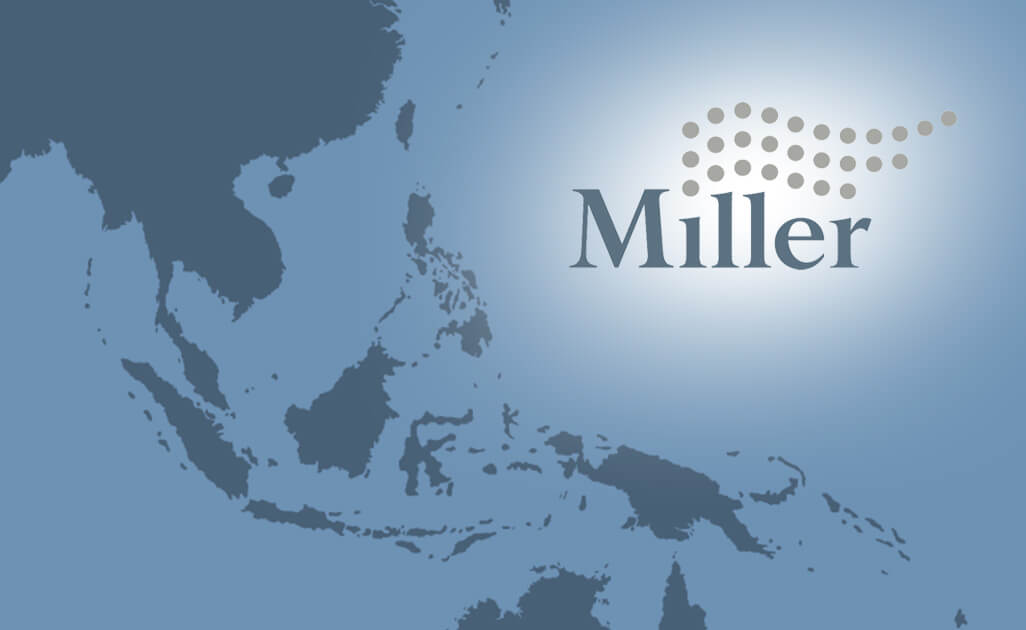 Miller, the specialist UK (re)insurance broker, expects a broad-based market softening across treaty and facultative reinsurance in APAC, with strong demand from reinsurers for Southeast Asian risks.
Miller, the specialist UK (re)insurance broker, expects a broad-based market softening across treaty and facultative reinsurance in APAC, with strong demand from reinsurers for Southeast Asian risks.
In an interview with InsuranceAsia News, Miller’s senior leaders in the region outlined their expectations for the upcoming renewal season, and outlook and strategy heading into 2026 as the broker continues its buildout in Asia following the opening of its South Korea office in February.
“From a [facultative] perspective, we have seen a softening of the market throughout this year,” said Chihiro Maekawa, head of property and casualty for Asia at Miller in Singapore.
“Facultative is not as seasonal as treaty and we have accounts renewing and accepting all year around. We have seen it throughout the year, and it is continuing to soften.”
At the upcoming 1.1 renewals, there is expected to be significant competition between reinsurers for business, with clients being able to obtain favourable terms and reinvest the savings in enhanced protections, following a tame year for natural catastrophe losses globally.
“We are entering a soft market,” said Richard Broad, head of treaty reinsurance APAC at Miller in Singapore.
“On the treaty side, we are expecting it to be competitive. The key thing is what will happen to the reinsurer results. I think they will all be very positive which means that some clients will want that support. It’s a very interesting conference to listen to how people are going to diversify and continue the growth journey in a softening market.”
“There is going to be some variances. People are looking at a softening of 5-10%, but it is very dependent on the risks.”

“Where we don’t have offices, we have set up territorial desks in Singapore to look after and target those territories from Singapore. That is our strategy in terms of our geographical footprint.”
Chihiro Maekawa, Miller
With growth in developing markets slowing, there is expected to be particularly strong demand for Southeast Asian risks from global reinsurers, creating opportunities for clients in the region, according to Broad.
“The demand is there for growth from the international markets coming into Southeast Asia,” Broad added. “That is a real positive for the region.”
Heading into 2026, Miller will continue to selectively expand its offering in Asia as its growth journey in the region continues under the ownership of GIC, the Singaporean sovereign wealth fund, which took full control of Miller in March 2024 by buying out Cinven.
The broker has invested heavily in growing its Asia team, having opened an office in Korea this year, and expanded its Japanese operation beyond marine risks. Miller now has over 100 staff in the region, including around 60 in its main Singapore hub, close to 20 in Korea and 30 in Japan.
“We opened our Korea office in February this year which is not just marine,” said Maekawa. “It’s P&C, and we’ve just hired a credit and political risks person, and a cyber specialist. We are building our specialisms in Korea. It’s an exciting time and we are seeing lots of opportunities in the business already in its first year.
“We’re really pleased and we want to grow that even more. Our strategy is to grow deep in the countries that we want to grow in. We are not going to have offices in every country in Asia, but we will selectively grow in the countries we want to. Korea is definitely one of them, and in Japan we have had an office for three years now. We continue to expand that as well.”
Miller may expand its physical presence in the region further, although the broker is pleased with its existing footprint across Asia, and any new expansion will be highly selective in line with the broker’s “nimble” approach, according to Maekawa and Broad.
“Where we don’t have offices, we have set up territorial desks in Singapore to look after and target those territories from Singapore,” said Maekawa. “That is our strategy in terms of our geographical footprint.”
In its 2024, the first full year of GIC control, Miller made record revenues of GBP271 million (US$353 billion), up 13% from the previous year, driven almost entirely by organic growth.
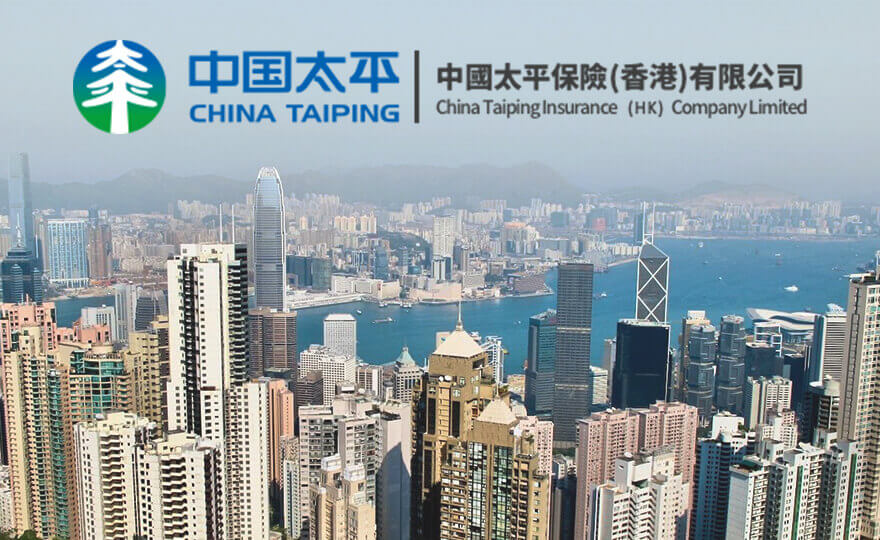 “While we anticipate continued market softening mainly driven by abundant capacity, our focus remains on maintaining underwriting discipline, improving client service capabilities and supporting our partners with comprehensive innovative solutions,” according to Yu Xiaodong, CEO of Taiping Re.
“While we anticipate continued market softening mainly driven by abundant capacity, our focus remains on maintaining underwriting discipline, improving client service capabilities and supporting our partners with comprehensive innovative solutions,” according to Yu Xiaodong, CEO of Taiping Re.
The company’s underwriting and analytics teams suggest that despite increasing climate-related losses, the reinsurance market continues to experience sufficient capacity across most regions.
“This environment has led to more substantive discussions around deductible levels, expanded coverage options, and frequency protections,” Yu said.
Casualty lines are expected to maintain relative stability compared to other segments, while cyber risks require increasing attention due to rapid technological advancement and widespread digital adoption across industries.
In the near term, Taiping Re observes that cedents are particularly concerned about managing reinsurance costs for loss-affected programmes, ensuring capacity reliability amidst current market volatility, and navigating geopolitical uncertainties.
“Longer-term considerations include the sustainability of reinsurance business models in the face of climate change, proper utilisation of alternative capital, and adapting to regulatory shifts across different jurisdictions,” Yu added.
The company’s regional expertise remains a key advantage.
“The company maintains a positive growth trend while providing strategic insights into the evolving market. This year marks the company's 45th anniversary. We believe that sustainable partnerships create more value than short-term market advantages.” Yu Xiaodong, Taiping Re

Taiping Re has solidified its market position through 10 years of specialised initiatives supporting emerging sectors such as the low-altitude economy (LAE), intelligent connected vehicle (ICV), cyber security, the belt and road initiative and greater bay area infrastructure development, where it provides technical expertise and insurance solutions.
Taiping Re, the global reinsurer headquartered in Hong Kong, said it continues to demonstrate resilience and long-term partnerships in a dynamic market environment.
“The company maintains a positive growth trend while providing strategic insights into evolving market. This year marks the company’s 45th anniversary, we believe that sustainable partnerships create more value than short-term market advantages.”
Innovation continues to drive Taiping Re’s value proposition, Yu said.
The company issued Asia’s first dual-peril, dual-trigger catastrophe bond and is improving risk assessment capabilities on flood risk in Hong Kong and Macau through collaborations with universities in the region, providing clients with real-time catastrophe risk analysis in response to Super Typhoon Ragasa.
Its AI intelligent life risk assessor platform, covering over 2,000 diseases, represents another technological breakthrough, utilizing large language models to enhance underwriting efficiency through natural language processing.
In the cyber domain, Taiping Re China, Taiping Re’s subsidiary in Chinese Mainland, has established a “cyber insurance innovation lab” and is developing proprietary pricing models while participating in pilot schemes led by China’s Ministry of Industry and Information Technology.
“The company also leads in ICV research, holding a national patent for autonomous vehicle risk modeling and publishing ICV Insurance Innovation White Papers. Building on its collaboration with leading Chinese Mainland automotive manufacturers, the company worked with industry peers to develop autonomous driving insurance products,” Yu added.
Looking ahead, Taiping Re remains committed to supporting cedants through tailored solutions, flexible terms, and its client-centric service, which combines advanced analytics with deep market understanding to address both traditional and emerging risks.
Through consistently strong performance and continuous innovation, Taiping Re continues to reinforce its position as a trusted partner in the global reinsurance landscape, capable of navigating market cycles while contributing to industry development and social resilience through its comprehensive risk solutions.

Antares Group, the Qatari Insurance Company-backed Lloyd’s insurer, will target growth in new lines of business in APAC and consolidate its position after its turnaround strategy gathered momentum in 2024, according to its senior management.
The insurer, which is celebrating its 10th anniversary in Singapore at SIRC this week, sees a softening of rates in APAC at the upcoming renewals, particularly property catastrophe, following a benign year for natural catastrophe losses in the region.
“The last two years for Asia have been quite benign for us so this year the renewal discussion is going to be very interesting,” said Li Shan Yeo, CEO of Antares Underwriting Asia, in an interview with InsuranceAsia News. “We do anticipate that it is very much going to be a buyers’ market.
“Different sectors and lines of business will have a different experience in terms of renewals
“It will not be a flat -5% reduction. It very much depends on individual lines – some will be more distressed, and others will be more moderate. “
Property renewal rates in APAC are expected to be down materially following a “benign” year for natural catastrophe losses in the region, according to Li.
The region has seen flooding in recent months and losses relating to typhoons, but barring the Myanmar-Thailand earthquake, the industry in APAC has faced few US$1 billion plus insured loss events.
Heading into 1.1 renewals, reinsurers must remain disciplined in the face of the market softening.
“If you do not maintain the discipline, you are faced with a lot of pressure on your margins, and it is not sustainable in the long term,” Li said. “We do not want another situation like 2017-18.
“There is definitely an opportunity in the sense that there is a lot of underinsurance. On the other hand, if insurers and reinsurers are not careful with the reduced margin, then we will not see much growth.”
“For us, the growth area is new lines. There are certain areas where we are really focusing like cyber, and terrorism. These are areas where we want to do more.” Li Shan Yeo, Antares Underwriting Asia

In 2026, Antares will look to do more in lines where it is currently “very underweight,” particularly cyber, as recent large scale cyber attacks drive awareness and demand for cyber cover, according to Li.
“For us, the growth area is new lines,” she added. “There are certain areas where we are really focusing like cyber, and terrorism. These are areas where we want to do more.”
Antares has been looking to kick on following a breakout year in 2024, when its restructuring gathered pace, with a long-term target to reach US$2 billion of GWP, according to CEO Mike van der Straaten.
“Overall, as long as we are proactive in the way we do business, we will fight our corner,” van der Straaten said.
“Those that are writing pro rata have a harder battle than we have in securing terms that make it work and produce a good margin for themselves.”
In FY24, Antares grew its core ongoing business’ gross written premium by 54% in 2024 to US$1.1 billion, aided by the impact of a large reinsurance deal. Excluding this deal, the growth would have been15%.
“We are projecting [GWP] of US$1.4 billion,” van der Straaten added. “The US$2 billion target because of the market changing at the moment, we don’t think is achievable in the next couple of years, but we are still holding it down as our goal.
“We are currently at around US$1.3 billion. If we could go to US$1.45 billion, or US$1.5 billion, that would be great growth.”
As part of its current strategy, last year Antares restructured its business into three new divisions – retail, commercial and legacy.
The legacy vision manages Antares’ run-off portfolio, which is mostly comprised of a large motor book in Gibraltar, which it no longer writes, while the commercial unit houses Antares Re and its Lloyd’s Syndicate 1274, which writes property, casualty, marine, specialty and reinsurance business.
“We have stepped into that market in a very small way and we’re looking at opportunities to grow that business, but we’re very happy with the Lloyd’s results.” Mike van der Straaten, Antares

Antares’ retail unit is responsible for its growth push into retail lines via MGAs, a key component of its growth plans.
In 2025, the Lloyd’s business has been profitable, with Syndicate 1274 posting a UK GAAP profit of US$42 million during the first half of the financial year, and a net combined ratio of 96.3% on GWP of $369 million.
The profitable result comes despite Antares provisionally reserving US$75 million to cover losses arising from the Los Angeles wildfires in January, the biggest insured catastrophe loss of 2025, and Russian aviation war losses.
“We have had the wildfires and the Ukrainian losses in the second quarter,” van der Straaten said.
“We just had our third quarter, and we are on track to meet plan again this year, and next year as looking quite favourable.
“As long as we’re proactive, I think we can achieve a good result.”
Antares expects to maintain its current Lloyd’s stamp capacity of around US$700 million amid the ongoing market softening, according to van der Straaten.
“I think [the Lloyd’s business] has reached the level where it needs to sit down and protect itself,” he added. “We are still looking at DNF, which is missing from our portfolio.
“We have stepped into that market in a very small way and we’re looking at opportunities to grow that business, but we’re very happy with the Lloyd’s results.”
 The insurance industry remains the “foundation of economic development”, according to Allianz management board member Chris Townsend, although he stressed it is not all plain sailing, with a number of challenges to overcome.
The insurance industry remains the “foundation of economic development”, according to Allianz management board member Chris Townsend, although he stressed it is not all plain sailing, with a number of challenges to overcome.
“I want to reinforce a very simple truth that an insurable world is an investable world. And where risk is understood and managed, capital will flow. And when capital flows, prosperity will follow,” he told delegates at the Singapore International reinsurance Conference.
“So, our industry is very much a foundation of economic development. And there is no industry which develops sustainably without us.
“So without us, infrastructure is not built, businesses don’t grow, and communities cannot recover from adversity.”
In 2024, global premiums for the reinsurance industry were about US$400 billion, according to Townsend, and since the turn of the last millennium, claims paid have been around US$2.5 trillion, “which has been put back into society and put back into the economy”.
“I remain convinced of both the efficacy and the potential of our industry to meet the challenges going forward because we have, aside from capital and a wealth of other things,” he added.
Townsend highlighted talent, data and trust, which in his view, really position the industry “well for the future”.
“Our industry is rich in both expertise and insight. We’ve got leaders capable of understanding these complex, interconnected risks, but there is a responsibility on us to make sure that we continue to attract and nurture talent and develop talent for the future as well, an area where the industry hasn’t been great historically,” he added.
“We hold information and data which rivals that of only the real largest tech giants. And whilst this might be for many of us, particularly the legacy players, whilst it might be in disparate systems, different formats and different languages, if we can use properly different tools of Gen AI and machine learning, we can unlock that treasure trove of data and use it to solve some of the most pressing problems for our industry.
“In a polarised world, one in which faith in institutions is declining, and where businesses in many countries have surpassed governments in terms of trust to deal with real-life problems, people fundamentally trust insurance and reinsurance.”
And three key themes also need to be considered for the reinsurance market to meet the challenges faced by the industry, according to Townsend.
“The first is the role of alternative capital and the opportunity for creativity and collaboration that we have with both data and with innovation,” Townsend said.
“The second is the defining challenge of our time, climate change and the protection gap and stepping up to show leadership in an existential issue and the private sector has to bring solutions to the problem or the state will step in, and if the state steps in, that will be lost forever.
“And third, again we need to meet that challenge with the appropriate talent strategy which is about retention, attraction and nurturing talent going forwards.”

“We've spoken about the protection gap many times. I've been in disconfidence a number of times where we've heard and spoken about, but we really haven't done very much to change it.”
Chris Townsend, Allianz
Alternative capital represents a threat and an opportunity, according to Townsend.
“Alternative capital continues to pose a significant challenge to the reinsurance industry, given they clout their willingness to absorb new financial risks and their overall approach,” he said. “So, it’s very much a force to be reckoned with going forwards.”
Meanwhile, Townsend said there is so much more the industry can do in terms of resilience and adaptation.
“We’ve spoken about the protection gap many times. I’ve been in disconfidence a number of times where we’ve heard and spoken about, but we really haven’t done very much to change it,” he added.
“We’ve got the skills, we’ve got the resources, but it needs a much more collaborative approach and one with firmer leadership than I think we’re demonstrating today.”
Finally, Townsend conceded that the industry had not done a great job in terms of attracting talent.
“We have to position the industry as more innovation focused and not purely about taking risks,” he said.
 1. What’s your observation on the premium growth and underwriting losses in 2025 as well as outlook for 2026?
1. What’s your observation on the premium growth and underwriting losses in 2025 as well as outlook for 2026?Christie Lee: I don’t think premium growth is the main focus for reinsurers in Asia. Even though the market is softening, reinsurers have been very bottom-line focused. In terms of the underwriting performance, so far 2025, it is still quite good.
Major cat losses have been quite benign and manageable, with large cat losses probably coming from Taiwan earthquake and also the Myanmar earthquake that hit Thailand.
As of first half in Q3, according to publicly announced results, both topline and the bottomline have improved.
So reinsurers are delivering good operating performance in 2025. We expect there will be rate reduction in 1.1. However, overall, the full-year performance will still highly depend on cat activities throughout next year.

CL (pirctured, below): In the North Asia market, particularly greater China, Japan and Korea, the top-line growth and risk-adjusted, exposure growth are not as quick as Southeast Asia.
This is because they are more mature markets, with economic growth in Japan and Korea relatively stagnant, while China has also slowed down, which affects the property side. However, we see rising reinsurance demand from some other areas, such as offshore wind energy in Taiwan because of government push for green energy.
Victoria Ohorodnyk: Southeast Asia, Australia and New Zealand, meanwhile, are a bit of a mixed bag. For example, results of national reinsurers in a lot of these countries have not actually been as good as the global trends due to impacts of the secondary perils. So, they have been growing more cautiously and selectively.
So on a risk-adjusted basis, the growth still is in high single digits to low teens on average. So what we’re definitely seeing is that the prudency is still being maintained, despite the current softening conditions. They have learned their lessons from past poor performances and do not want to see deteriorating results.
VO: A lot of primary companies and reinsurers are still reacting and digesting some of these ongoing regulatory changes. If we take Indonesia, for example, with the stringent capital requirements, we are expecting to see more consolidation in markets like that.
On the flip side of that, stronger regulatory regimes attract more international capacity to the markets. So the local players will need to up their game to be competitive with the international players.
The transition period might be challenging for local players, but once they get to the other side, that would make for a better, stronger market.
CL: For Japan, the consolidation happening within MS&AD between Mitsui Sumitomo Insurance (MSI) and Aioi Nissay Dowa Insurance (ADI) means they will pull together a larger capital size. Overall, we’re expecting Japanese carriers will have stronger capability to retain more underwriting risk in their own books. And perhaps the demand on reinsurance might come down on the combined basis.
We have actually started seeing this this year. We expect the same effect by 2026 when the two large MS&AD entities combined together.
Japan property treaties are one of the largest in the world. So if there’s a premium reduction from Japan, reinsurers might have to look elsewhere for filling the top line gap.
VO: I would say the themes are largely quite similar in Australia. The demand for reinsurance, I think, can only increase with climate risks. But a lot of the regulatory developments are still ongoing. So it’s sort of a wait and see for now.
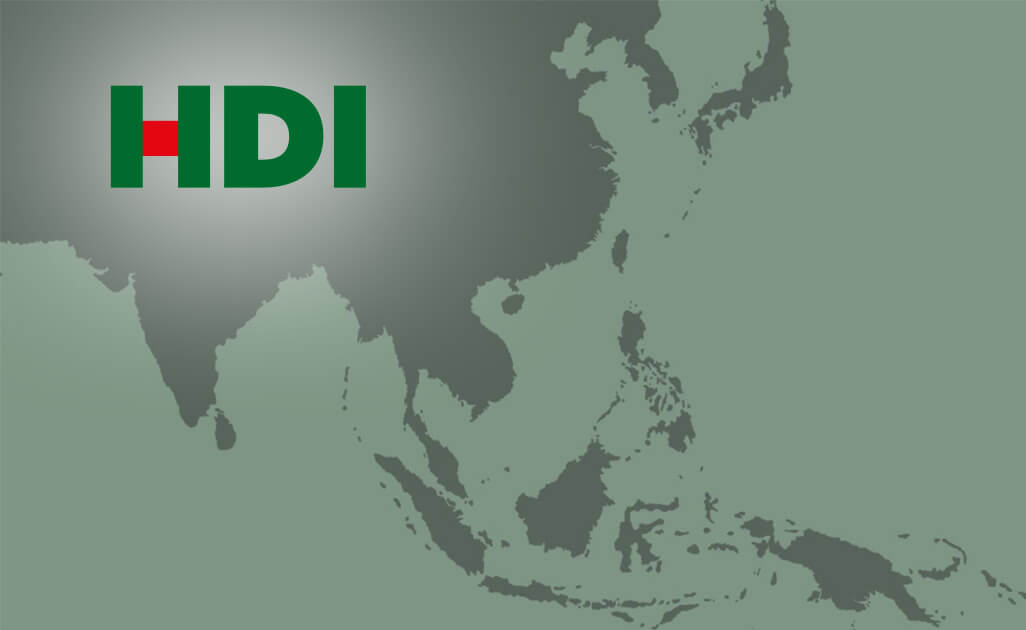 HDI Global continues to focus on the buildout of its energy hub in Southeast Asia amid a volatile geopolitical backdrop and the ever present threat of natural catastrophe risks in the region.
HDI Global continues to focus on the buildout of its energy hub in Southeast Asia amid a volatile geopolitical backdrop and the ever present threat of natural catastrophe risks in the region.
In an interview with InsuranceAsia News, Alex Tarantino, managing director and principal officer at HDI Global SE Singapore, outlined the insurer’s top priorities for growth in the region heading into 2026.
“What we know for sure is there will be continued volatility, which we are used to managing,” said Alex Tarantino, Managing Director and Principal Officer at HDI Global SE Singapore. “I continue to forecast growth of our energy hub as we expand our proposition with the launch of upstream energy next year. This will complement our existing power capabilities, as well as our mid and downstream offerings.”
According to Tarentino, Malaysia, Thailand and Indonesia are three key markets that continue to be of “significant interest” to HDI heading into 2026.
“When it comes to specific countries, Malaysia, Thailand, and Indonesia are of significant interest to us,” said Tarantino. “We have a Tier 2 Labuan license in Malaysia, which we will continue to utilise, and we’re closely tracking GDP growth in Thailand and Indonesia, where we see strong potential.”
Launched in 2024, HDI’s Singaporean energy hub offers clients coverage across the energy value chain, including downstream and renewables, and is designed to help clients navigate the energy transition by providing brokers and clients with a single point of contact for all their energy needs, according to HDI.
“Across Southeast Asia, we are seeing huge investments into renewable energy and are bolstering and expanding our energy hub,” said Tarantino. “It is one of our fastest growing areas, especially in construction and operations. We expect continued growth as the region advances and progresses on its energy transition needs.”
From its Singapore hub, HDI also plans to double down on its property and marine underwriting in the region.
“You cannot ignore the current opportunities in Singapore’s marine sector at the moment,” Alex Tarantino, HDI Global

“As a global insurer—particularly looking at Singapore’s reinsurance and wholesale markets—we see plenty of opportunities for growth in our property line outside of energy,” said Tarantino. “We are a leading global insurer for international programmes, and across Southeast Asia, we’re seeing a wave of consolidation across such programmes. Historically, large Asian conglomerates have managed fragmented global programmes, but that’s now changing.”
“You cannot ignore the current opportunities in Singapore’s marine sector at the moment,” added Tarantino.
Southeast Asia has been fortunate in 2025 with natural catastrophe losses remaining relatively benign, except for the Myanmar-Bangkok earthquake in March, which caused large amounts of insured damage in the Thai capital.
Insured losses from the recent typhoons such as Typhoon Ragasa, which struck Taiwan, the Philippines, Hong Kong, and Vietnam in September, have been light.
“Everything is trending as expected,” said Tarantino. “The question is how we continue to underwrite amidst the volatility. The conversation is steering towards the tools and technologies available to underwriters today. Take AI, for example: it’s enabling us as underwriters to make smarter, quicker decisions, particularly when it comes to natural catastrophe accumulation.”
In its 2024 financial year, HDI made global insurance revenues of EUR10 billion, up 10% from the previous year, with the Singaporean branch making a significant contribution to this growth, according to the insurer.
HDI made Ebit of EUR702 million in 2024, with a combined ratio of 90%.
 The fast-paced and comparatively unconstrained nature of property construction in India is fuelling flood losses for (re)insurers, according to Alok Kumar, head of Global Analytical Services and managing director for India for Risk Management Solutions (RMS), a Moody’s Analytics company.
The fast-paced and comparatively unconstrained nature of property construction in India is fuelling flood losses for (re)insurers, according to Alok Kumar, head of Global Analytical Services and managing director for India for Risk Management Solutions (RMS), a Moody’s Analytics company.
“For two decades, the market was mostly concerned about earthquake risk, driven by the fact that India had a massive earthquake in 2001 in Gujarat, which at that time was not as industrialised as it is today,” Kumar said.
“The whole insurance market and risk transfer market was very focused on that. Fast forward to today: given the rapid urbanisation of the country, and not necessarily controlled urbanisation of the country, has resulted in weather perils such as flood becoming extremely important.”
“As a country we experience a number of floods every single year, and these floods for the insurance industry are becoming important, as these are what drive the losses that they see in the lower reinsurance layers that they buy.”
“Big losses are largely transferred to reinsurers, but these mid-sized flood losses largely stay on insurance companies’ books, and that’s why insurers are getting concerned about the frequency of these losses, and the fact that they are staying on their own books. That is a significant shift.”
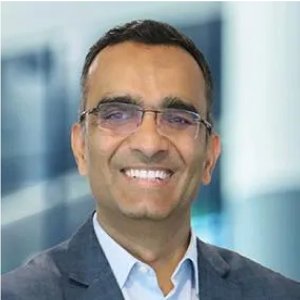
“With the pace of urbanisation, the challenge is that they could have built anyway they wanted. And the first priority has been ‘build! build! build!’ because real estate prices are going up.”
Alok Kumar, RMS
Kumar accepted that climate variability is clearly playing a part in the increasing frequency of flood losses, but stressed that this is not the whole picture.
“More and more I like to call urban flooding a man-made disaster rather than a natural disaster,” he said.
“The size of losses is increasing because the urbanisation is not very well planned. There are buildings being constructed on what used to be the floods zones, or what used to be the lake beds, getting refilled. There is massive construction happening, but when the rain happens, the water has to go somewhere, and it goes to the areas that are flood plains or low-lying areas and you see massive flood losses. That’s why I call it a manmade disaster; it’s not only the volume of rainfall that is causing this.”
Kumar also accepted that India has “a long way to catch up” when it comes to replicating the well-developed flood risk management infrastructure and procedures of some other countries.
“With the pace of urbanisation, the challenge is that they could have built anyway they wanted. And the first priority has been ‘build! build! build!’ because real estate prices are going up. So they’ve built a lot and now water doesn’t have any outlet. Urban India has a lot of big apartment blocks, with two or three levels of basement, and during floods these basements get filled, causing massive damage to the cars there,” he said.
He said that Moody’s already had a detailed and comprehensive flood moss for India, and has recently added a tropical cyclone loss model.
“A of flooding is also triggered by the tropical cyclones which are coming on board,” he said, adding that Moody’s ambition was to provide “a comprehensive and complete range of modelling solutions to a growing market like India.
“Now in India we have a probabilistic flood model, we also have tropical cyclone.”
Kumar was also optimistic about the prospects for modelling services in India next year as the country continues to open up to international (re)insurers after decades of relative protectionism.
“Global players are used to a risk-adjusted view of the business,” he added.
“They want to make sure they are bringing the latest science and technology to help identify and quantify the risk. That’s the shift I expect to see as more foreign players come into the market: risk management will become more scientific and more technology-based.”
 With hail becoming a broader risk globally, data analytics provider Verisk is considering expanding its hail risk solutions to Japan, said Rob Newbold, president of Verisk Extreme Event Solutions.
With hail becoming a broader risk globally, data analytics provider Verisk is considering expanding its hail risk solutions to Japan, said Rob Newbold, president of Verisk Extreme Event Solutions.
“We’ve gotten a lot of questions and interest in hail risk in Japan, which has faced severe hail losses recently. We’re talking to the market to determine the need and viability for building a model for hail risk in the country,” he said.
In APAC, Verisk currently has hail model in Australia, which Newbold said “it has been the subject of several conversations at SIRC.”
“Globally, that severe thunderstorm hail peril seems to be generating more interest. We call them frequency perils as they happen more often and individually have less impact, but collectively in the aggregate can be just as damaging as a typhoon,” he said, adding that Verisk also has a roadmap of priorities that it is working on for other views of risk.
“The mix of overall market need and availability of our team to deliver that model is how we’ll make that call.”
In 2025, Verisk has made a couple of investments in APAC.
Most recently, it has launched its first inland flood models for Malaysia and Indonesia, covering a wide range of areas, including infrastructure, vehicles, marine cargo, and industrial assets.

“We will continue to invest to bring updated, new models to this market. We believe that APAC plays an important role in the overall global insurance and reinsurance market.”
Rob Newbold, Verisk Extreme Event Solutions
“At least in Malaysia, while there is some background earthquake risk, the really only cat-exposed peril is flood. So as we talk to our clients in the region who are looking for different views of risk, flood was just a logical thing for us to bring to market,” said Newbold.
He added that with APAC suffering from one of the largest protection gaps in the world, flood is a really good example of a peril without broad insurance penetration globally.
In 2027, Verisk is also expected to roll out the flood models for Australia and New Zealand, completing its multi-peril offering for the two countries, which has already consisted of typhoon, earthquake, bushfire and hail.
“Australia and New Zealand are the two that we’re working on right now. And after that, we’ll talk with our clients and evaluate what’s next on the roadmap,” he said.
In APAC this year, the company has also updated its South Korean typhoon model, which has a precipitation-induced flooding component to it.
“We will continue to invest to bring updated, new models to this market. We believe that APAC plays an important role in the overall global insurance and reinsurance market,” Newbold said.
“Our view of opportunity in the market is to use these models to help to address the protection gap. The risk is insurable. It’s a question of using the tools that are available to understand the climate exposed cat risk and help to bring coverage to markets where it’s not currently written.”
However, data remains a big challenge, he added.
“I think getting availability of both exposure and actual loss data to help to build and validate the models is hard.
“Compared to the US, for example, where rooftop level, building level data is quite common, it’s harder to get that level of granular data in different APAC regions,” he said.
“So we have data partners, we make assumptions, we do analytics, we use GIS imagery to help to get that data as much as we can. But that’s probably the biggest challenge is availability of exposure data.”